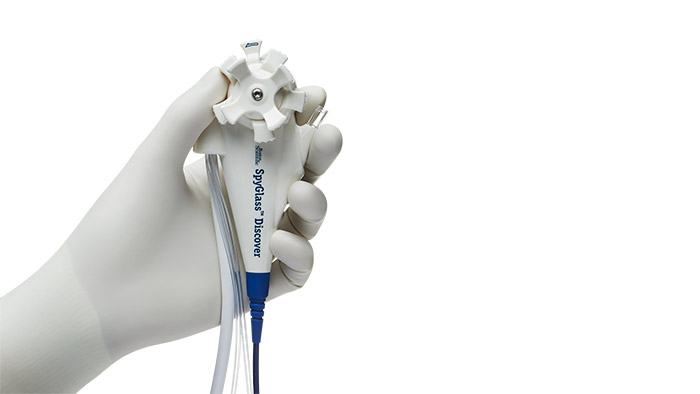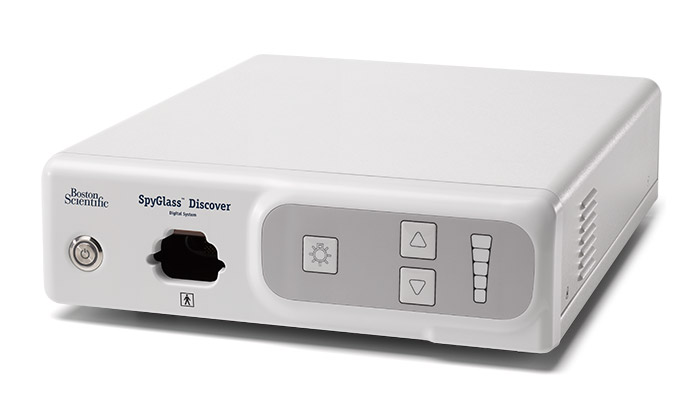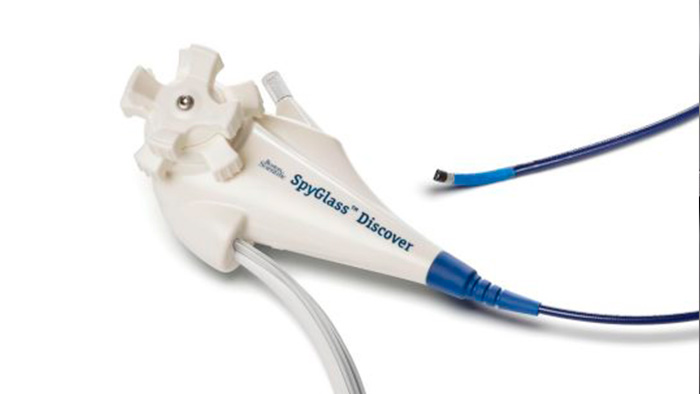A better view in challenging cases

Percutaneous transhepatic cholangioscopy (PTCS) is a treatment approach for complex patients who may have limited options for stone disease or stricture management.
It can include patients that:
- have surgically altered anatomy
- are unable to receive an ERCP
- are high-risk surgical patients
These patients may have undergone a previous surgery like a Roux-en-Y gastric bypass, pancreaticoduodenectomy (Whipple procedure), or liver transplant that resulted in altered hepato-pancreato-biliary (HPB) anatomy.¹
Managing subsequent bile duct stones or biliary obstruction in such patients can prove challenging. Their current health status may also exclude surgery from the available treatment options.²
PTCS with SpyGlass™ Discover

SpyGlass™ Discover helps you overcome these challenges. It is a single-use, sterile endoscope for use in the pancreaticobiliary system, including the hepatic ducts.
It leverages a minimally invasive approach, with an outer diameter of 3,5 mm (11 or 12 Fr access sheath). This gives you the ability to gain access in patients with complex or altered anatomy percutaneously.
View product information for the SpyGlass™ Discover Digital Catheter:

A holistic approach to the HPB (hepato-pancreato-biliary) pathway
Explore the Boston Scientific innovations that facilitate smooth access



















